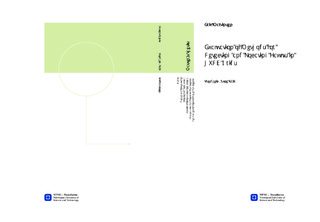| dc.contributor.advisor | Høidalen, Hans Kristian | nb_NO |
| dc.contributor.advisor | D'Arco, Salvatore | nb_NO |
| dc.contributor.author | Martinsen, Erik | nb_NO |
| dc.date.accessioned | 2014-12-19T13:56:39Z | |
| dc.date.available | 2014-12-19T13:56:39Z | |
| dc.date.created | 2014-11-13 | nb_NO |
| dc.date.issued | 2014 | nb_NO |
| dc.identifier | 762902 | nb_NO |
| dc.identifier | ntnudaim:11831 | nb_NO |
| dc.identifier.uri | http://hdl.handle.net/11250/258064 | |
| dc.description.abstract | In this thesis work, different proposed methods for detecting and locating short circuit faults in Multi Terminal HVDC grids have been evaluated by implemenation and transient simulations in PSCAD. The research has been limited to cable based systems. HVDC grids have seen increasing interest in recent years, but have yet to be fully realised. Suitable converter technology was introduced in 1997 and has been further developed since, while switches able to interrupt large DC currents were introduced in June 2013. One of the major issues left is fault localisation. Due to the low impedance in HVDC cable systems, fault currents rise to severe magnitudes system wide in a matter of a few milliseconds. This may cause damage to the converter diodes if not dealt with quickly.In order to obtain a better understanding of the fault propagation, research into the subject is presented. It is found that the capacitors in the converters is a main source of large fault currents, and fast fault detection is essential for protection of converter components. Time between first detection of fault until current interruption should be within a few milliseconds. Different methods have been proposed for localisation of faults in recent years. These are presented together with traditional fault localisation methods, and briefly discussed with the intent of deciding which to implement and evaluate in PSCAD.Protection based on current derivative and wavelet transformation, as well as travelling wave protection is chosen and implemented in a three converter VSC system. Different fault types are applied at various locations with varying system capacitance and up to 16 $Omega$ fault impedance. The results indicate that none of the three methods are able to detect and locate all impedance faults on their own. The travelling wave protection is suitable for short lines, but fails when exposed to high fault impedances and distances. By using derivative polarity to determine direction of fault and wavelet magnitude to determine distance, faults are successfully located in a high capacitance system within a respectable time. It is concluded that all the three tested methods should be considered for implementation when designing a future HVDC protection system. | nb_NO |
| dc.language | eng | nb_NO |
| dc.publisher | Institutt for elkraftteknikk | nb_NO |
| dc.subject | ntnudaim:11831 | no_NO |
| dc.subject | MTENERG energi og miljø | no_NO |
| dc.subject | Elektrisk energiteknikk | no_NO |
| dc.title | Evaluation of Methods for Detecting and Locating Faults in HVDC Grids | nb_NO |
| dc.type | Master thesis | nb_NO |
| dc.source.pagenumber | 148 | nb_NO |
| dc.contributor.department | Norges teknisk-naturvitenskapelige universitet, Fakultet for informasjonsteknologi, matematikk og elektroteknikk, Institutt for elkraftteknikk | nb_NO |

